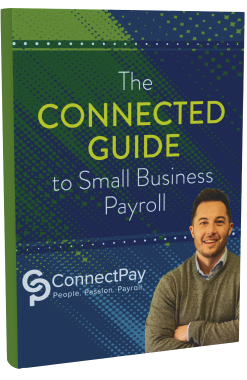CPA Guide to Holiday Bonuses, Payroll Adjustments & Tax Impacts

The holiday season is prime time for businesses to show appreciation to employees using cash bonuses, gifts, or year-end payroll adjustments. But for CPAs, this time of year also brings a wave of tax implications and reporting requirements.
Here’s a clear, practical guide to help CPAs navigate holiday bonuses and payroll adjustments while keeping tax impacts in check.
Types of holiday bonuses: Know the rules
Not all bonuses are created equal, and the IRS certainly doesn’t treat them the same. CPAs must help clients distinguish between:
- Discretionary bonuses: These are surprise, non-contractual payments made purely at the employer’s discretion. They’re considered taxable income, but don’t affect regular pay calculations.
- Non-discretionary bonuses: These are promised ahead of time (e.g., tied to performance goals). Because they’re expected, they must be factored into overtime calculations and are subject to stricter compliance rules under the Fair Labor Standards Act (FLSA).
- Gifts and gift cards: Physical gifts of nominal value (e.g., a turkey or holiday basket) might be considered de minimis and non-taxable. However, gift cards are always taxable, no matter how small the amount.
CPA Tip: Remind clients that any holiday bonus, cash or cash-equivalent is subject to standard payroll tax withholding unless it qualifies as a non-taxable fringe benefit.
Tax withholding and gross-up strategies
Bonuses are subject to federal income tax, Social Security, Medicare, and applicable state and local taxes. There are two IRS-approved methods for withholding:
- Aggregate method: Combine the bonus with regular wages and withhold based on the employee’s W-4. This results in higher withholding and more precise alignment with annual tax obligations.
- Percentage method: Withhold at a flat 22%, plus applicable FICA and state/local taxes. This is simpler but may under- or over-withhold depending on the employee’s total earnings.
CPA Tip: Some employers opt to gross up the bonus by calculating a higher bonus amount so the employee receives a specific net amount after taxes. Remind your clients that this can be an appreciated gesture, but it increases the employer’s payroll tax liability and must be carefully calculated.
Year-end payroll adjustments: Timing is critical
Year-end is a strategic opportunity for businesses to correct payroll errors, update benefits contributions, and process deferred compensation. CPAs should flag and help address the following:
- Correcting misclassified earnings: If bonuses were miscategorized or taxable benefits not properly reported during the year, now’s the time to fix it.
- Deferred compensation plans: Ensure any nonqualified deferred compensation complies with IRC Section 409A to avoid penalties.
- Expense reimbursements: Verify that all reimbursements meet accountable plan requirements or else classify them as taxable income.
- Non-cash compensation: Stock options, personal use of company vehicles, or club memberships must be valued accurately and included in W-2s where applicable.
CPA Tip: Double-check year-to-date earnings and deductions before the final payroll run. Mistakes caught now can prevent costly W-2 corrections later.
W-2 and 1099 reporting: Get it right the first time
The IRS expects accurate, timely reporting of all compensation. For CPAs, that means:
- Ensuring Form W-2 reflects all taxable wages, bonuses, fringe benefits, and deferred comp.
- Issuing Form 1099-NEC for holiday bonuses paid to independent contractors (don’t mix up employee and contractor payments).
- Verifying that all Social Security and Medicare tax caps are respected ($176,100 for Social Security wage base in 2025).
CPA Tip: Late or incorrect filings can trigger penalties up to $310 per form. A proactive approach with clients minimizes these risks.
Bottom Line
Holiday bonuses are a powerful retention tool, but they’re also a tax and payroll minefield if mishandled. As a CPA, your role is to help clients balance generosity with compliance. From advising on bonus structures to calculating tax impacts and ensuring accurate year-end reporting, your guidance is key to ending the year on a high note — and with no surprises from the IRS.






